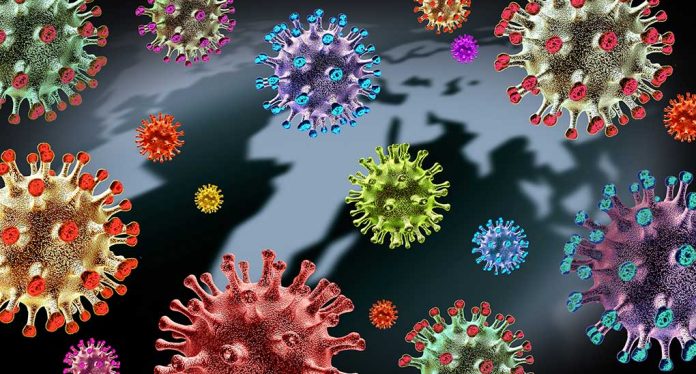
A new Monkeypox strain in northern California sets off alarms with its increased lethality and transmission risks.
At a Glance
- A new, more deadly Monkeypox strain from central Africa is in the U.S.
- The virus can spread through close contact and contaminated surfaces.
- The first U.S. case involved a traveler from East Africa, now isolated.
- Health authorities are prepared with testing and vaccine supplies.
New Strain Detected
A newly identified strain of Monkeypox has surfaced in northern California, marking the first known case of this variant in the United States. Originating from central Africa, this strain is more deadly and transmissible compared to previous ones identified in the country. Health officials in California confirmed the infection in an individual who recently traveled from East Africa, highlighting the need for heightened awareness and preparedness. The infected person is currently isolated and showing only mild symptoms.
The World Health Organization recognized the outbreak as a global emergency, noting a substantial number of cases and fatalities in Africa, including reports of more than 57,000 confirmed or suspected cases and nearly 1,200 deaths since January. The critical factor behind the concern is the virus’s accelerated mutation rate, coupled with its potentially prolonged human-to-human transmission capabilities.
Modes of Transmission
This strain spreads through various methods, including sexual contact, bodily fluids, skin rashes, respiratory droplets, and exposure to contaminated objects. Such versatility in transmission demands rigorous public health preparedness measures to contain and mitigate potential outbreaks effectively. Symptoms manifest similarly to smallpox, which include fever, chills, a severe rash, and body lesions. Testing and vaccination are advised for individuals with unexplained rashes or those who have traveled to affected regions.
Despite the increase in cases and the mutation of the virus, health authorities in California consider the current risk to the public as “very low.” Efforts are ongoing with the CDC for effective contact tracing, ensuring that those exposed or at risk receive the appropriate medical care and monitoring.
Preparedness and Future Outlook
The readiness of health systems is crucial in managing the threat posed by the new Monkeypox strain. The U.S. Centers for Disease Control and Prevention (CDC) state they are equipped with an adequate supply of the Jynneos vaccine and have comprehensive testing and monitoring strategies in place. These safeguards form an essential part of the public health response to prevent widespread transmission and panic.
Continued collaboration among international health bodies, coupled with public awareness campaigns, can help mitigate the spread of the virus. Authorities emphasize applying preventive measures such as avoiding close contact with infected individuals, maintaining hygiene, and seeking medical advice when symptoms emerge. Addressing the looming threat of this virulent strain is imperative to safeguard public health and ensure a robust defense against potential outbreaks.














